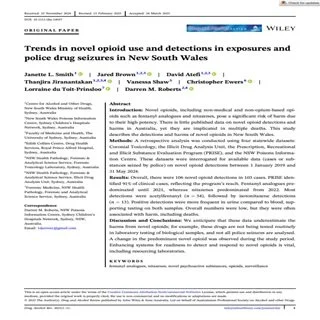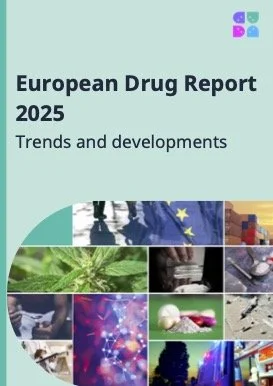By Janette L. Smith, Jared Brown, David Atefi, Thanjira Jiranantakan, Vanessa Shaw, Christopher Ewers, Lorraine du Toit-Prinsloo, Darren M. Roberts
Novel opioids, including non-medical and non-opium-based opioids such as fentanyl analogues and nitazenes, pose a significant risk of harm due to their high potency. There is little published data on novel opioid detections and harms in Australia, yet they are implicated in multiple deaths. This study describes the detections and harms of novel opioids in New South Wales.
Methods
A retrospective analysis was conducted using four statewide datasets: Coronial Toxicology, the Illicit Drug Analysis Unit, the Prescription, Recreational and Illicit Substance Evaluation Program (PRISE), and the NSW Poisons Information Centre. These datasets were interrogated for available data (cases or substances seized by police) on novel opioid detections between 1 January 2019 and 31 May 2024.
Results
Overall, there were 106 novel opioid detections in 103 cases. PRISE identified 91% of clinical cases, reflecting the program's reach. Fentanyl analogues predominated until 2021, whereas nitazenes predominated from 2022. Most detections were acetylfentanyl (n = 54), followed by isotonitazene detections (n = 13). Positive detections were more frequent in urine compared to blood, supporting testing on both samples. Overall numbers were low, but they were often associated with harm, including deaths.
Discussion and Conclusions
We anticipate that these data underestimate the harms from novel opioids; for example, these drugs are not being tested routinely in laboratory testing of biological samples, and not all police seizures are analysed. A change in the predominant novel opioid was observed during the study period. Enhancing systems for readiness to detect and respond to novel opioids is vital, including resourcing laboratories.
Drug Alcohol Rev. 2025;1–11




